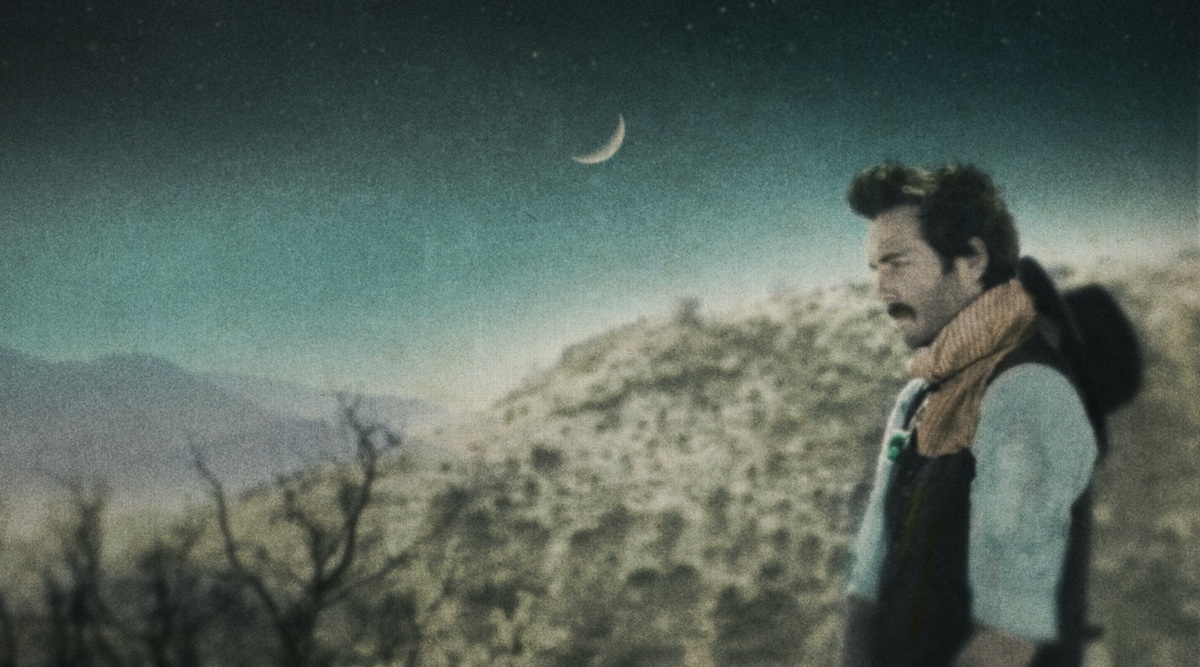Lord Huron is at Home on the Range

IMAGE COURTESY OF JESSICA YURASEK
For someone set to release his first full-length album in a matter of days, Ben Schneider sounds remarkably relaxed. “I think I’m gonna go out fishing today,” he tells us matter-of-factly, while laying low before a rehearsal. That Schneider, the singer, songwriter, and driving force behind LA-based indie folk outfit Lord Huron, traded his home in Michigan for big-city life is of little surprise, given the creative prospects of the former. But to hear Schneider tell it, it’s clear he hasn’t let go of his roots: “I live in the city now, but I still kind of try to make it as un-city-like as possible.”
Undoubtedly making the transition process easier is the make-up of Schneider’s band. Originally a solo project, Lord Huron now consists of Schneider, Mark Barry (percussion, vocals), Miguel Briseno (bass, percussion), Brett Farkas (guitar, vocals) and Tom Renaud (guitar, vocals)—all Michigan natives. On Lonesome Dreams, the group’s new record, influences both geographic and literary (the album is purportedly based on a series of adventure novels by George Ranger Johnson, a fictitious author for whom Lord Huron has made a website) inform songs both wildly expansive (infectious leads single “Time to Run”) and delicately introspective (the beautiful “She Lit a Fire”).
Anxious to learn more about the band’s inspirations and multimedia approach, Interview recently caught up with Schneider by phone.
JEFF OLOIZIA: Lord Huron began as a solo project. How have you found the transition to playing with a full band?
BEN SCHNEIDER: In terms of how we’ve done it live, I’ve had a band since the first live shows. I guess the biggest transition was recording with new people, because the first three EPs I did, I did everything and then recorded it myself. This time around, I had to get used to having other people around. They’re all incredible players, so it definitely benefited the record, but when you work by yourself for so long, you develop some idiosyncrasies that other people have to get used to. [laughs] So that’s been part of the challenge of recording, but I think it worked out for the best. I’ve been playing with some of these guys since I was 12 years old, so it’s pretty cool to be heading out on the road with them again.
OLOIZIA: There’s a great sense of space in your music, which I think could rightfully be described as atmospheric. However, I understand you write the songs by yourself.
SCHNEIDER: Mm hm.
OLOIZIA: How do you account for that space, then, when you don’t have the band around you? Is that something you’re conscious of as you’re writing?
SCHNEIDER: Yeah, definitely. I guess modern production techniques allow you to do that a lot easier. There’s all kinds of tricks you can do that can help you kind of space things out, and there’s a lot of different ways to achieve that—whether it’s not having a sonic space filled, or adding a distant sound that recalls space or something far off. But I think about that an awful lot when I’m demoing songs, and I demo really extensively. I have the songs pretty much fully fleshed out by the time we actually go to the studio, and the way I think about it a lot is visually—imagining landscapes that I’m trying to describe sonically.
OLOIZIA: I wanted to ask you about that. I know that visuals are really important to you and to Lord Huron as a collective unit. Was there a specific theme or vibe that you were going for in designing the album cover?
SCHNEIDER: Yeah, I think I definitely try to do that with all of the records. I kind of think of these songs as stories from some folk-Western series of novels, but it’s got an exotic twist, too. So I had this image in my head of this desert that’s, you know, Western, but it also kind of looks Middle Eastern, and the crescent moon kind of hints to that. And the lone rider reflects the lonesome idea that runs through the record.
OLOIZIA: When you create these visual projects to accompany the songs—whether it’s the album cover or the paintings or the videos—do you typically think of the music or the images first? Is there one that influences the other?
SCHNEIDER: I usually try to develop them in tandem. With this record, there’s a drawing and a sort of digital painting that goes with each song, and I made book covers to go with each song as well. I do all this stuff just to help me get a full grasp of the song and what I’m trying to say. And it’s fun, too.
OLOIZIA: Do you plan to incorporate any of these visual aspects into your live show?
SCHNEIDER: We’d love to be able to have projections and stuff every night, but because of the size of the clubs we’re playing, it’s just not something that can be done. We don’t have a road crew or anything yet, so it’s just a lot to handle. But down the line, it’s definitely something that we talk about a lot that we want to do.
OLOIZIA: Something to look forward to.
SCHNEIDER: Absolutely.
OLOIZIA: You mentioned Western novels earlier. Did you have any specific literary references for this album?
SCHNEIDER: I’ve always loved, like, cheesy Western dime novels, and also some of the more literary stuff—Louis L’Amour, and Larry McMurtry, and Cormac McCarthy. There’s a book in particular called The Collected Works of Billy the Kid that I’ve loved since I read it in college. It’s really cool, because it’s a novel, but it’s written more in verse than in prose. I think about that book a lot when I write lyrics, because it tells this great Western narrative, but it’s through these really beautiful poems.
OLOIZIA: Those Western influences are really apparent on the record, but there also seem to be a lot of world music influences there. Where did these come from?
SCHNEIDER: I’ve always just had an interest in world music and loved exploring—not only physically, as in actually going to places and checking out music, but also just going to record stores and buying records with funny, exotic covers and seeing what’s on there. I’ve discovered a lot of great music that way. I think on the first couple EPs, I was really exploring that world sound a little more deliberately. It’s definitely still around on the new stuff, but I’ve taken the elements that I was able to experiment with earlier and thrown them down into something that’s hopefully more advanced.
OLOIZIA: I read that a lot of what you hear in the songs comes from your travels. Do you have any “life on the road” tales that would help people better understand the new record?
SCHNEIDER: When I was in Indonesia a couple years ago, I rented a scooter and saw some gamelan orchestras that I took sample recordings from and used. So that was part of it. I’ve been traveling around the States mostly on tour, and I think a lot of those golden-hour drives through huge desert landscapes definitely had some impact on the sounds. In that case, it wasn’t really sampling anything, but the aesthetic of the big, wide-open spaces definitely influenced what you hear. I’m always looking to get out and experience new places and hear music, but lately it’s been more about touring around.
LONESOME DREAMS IS OUT OCTOBER 9 ON IAMSOUND. LORD HURON WILL PLAY MERCURY LOUNGE OCTOBER 9 AND GLASSLANDS GALLERY OCTOBER 12. FOR MORE ON THE BAND, VISIT THEIR WEBSITE.






